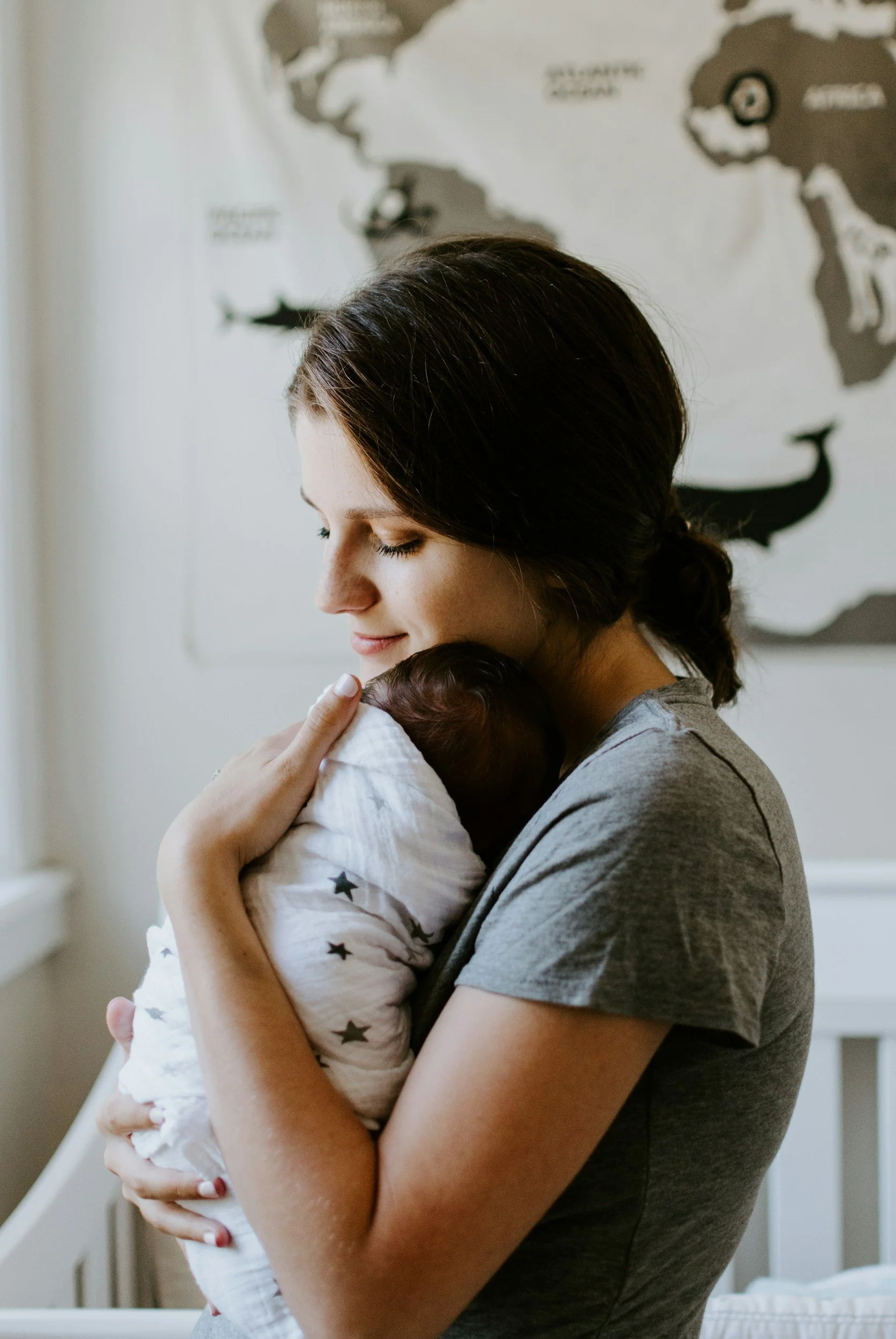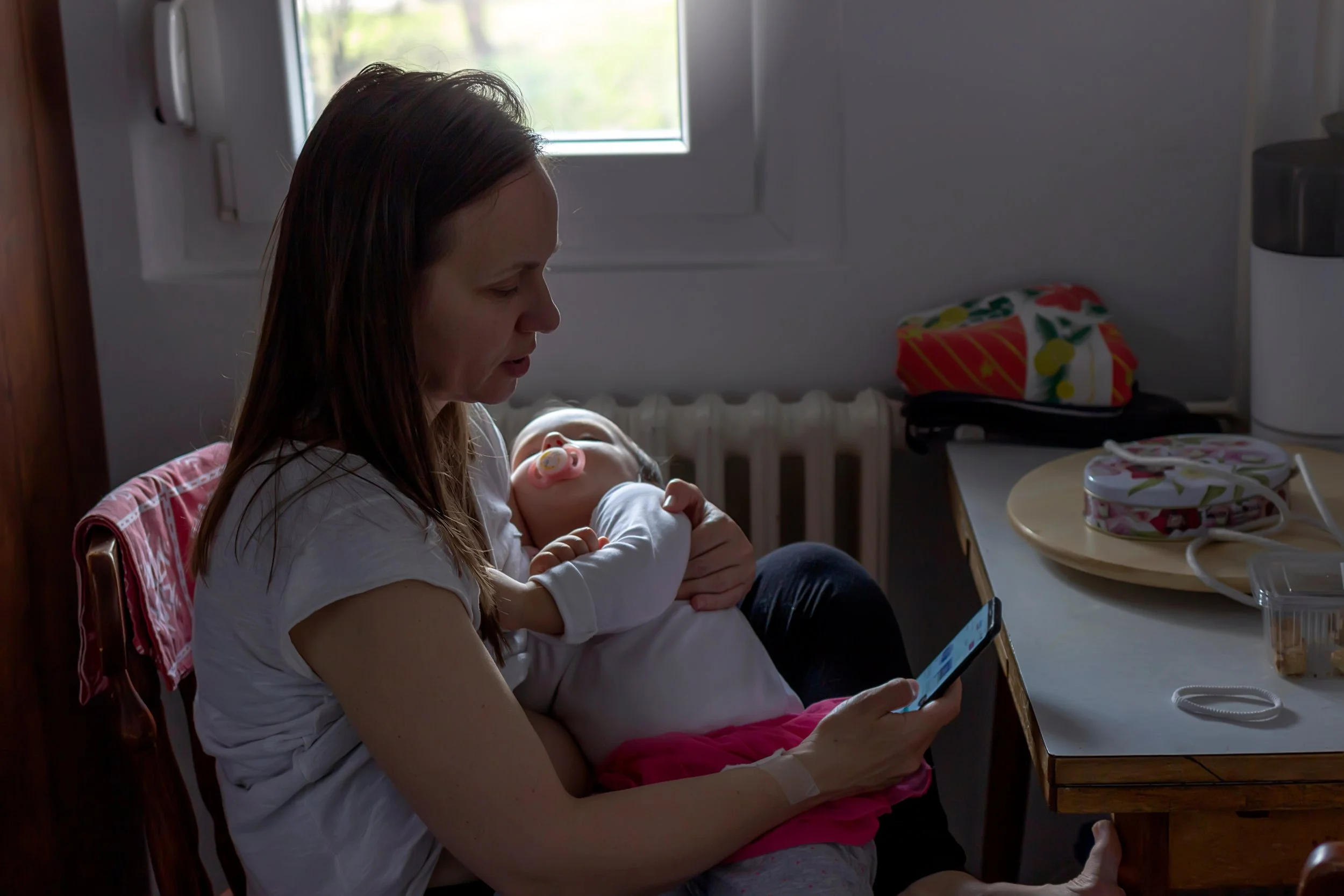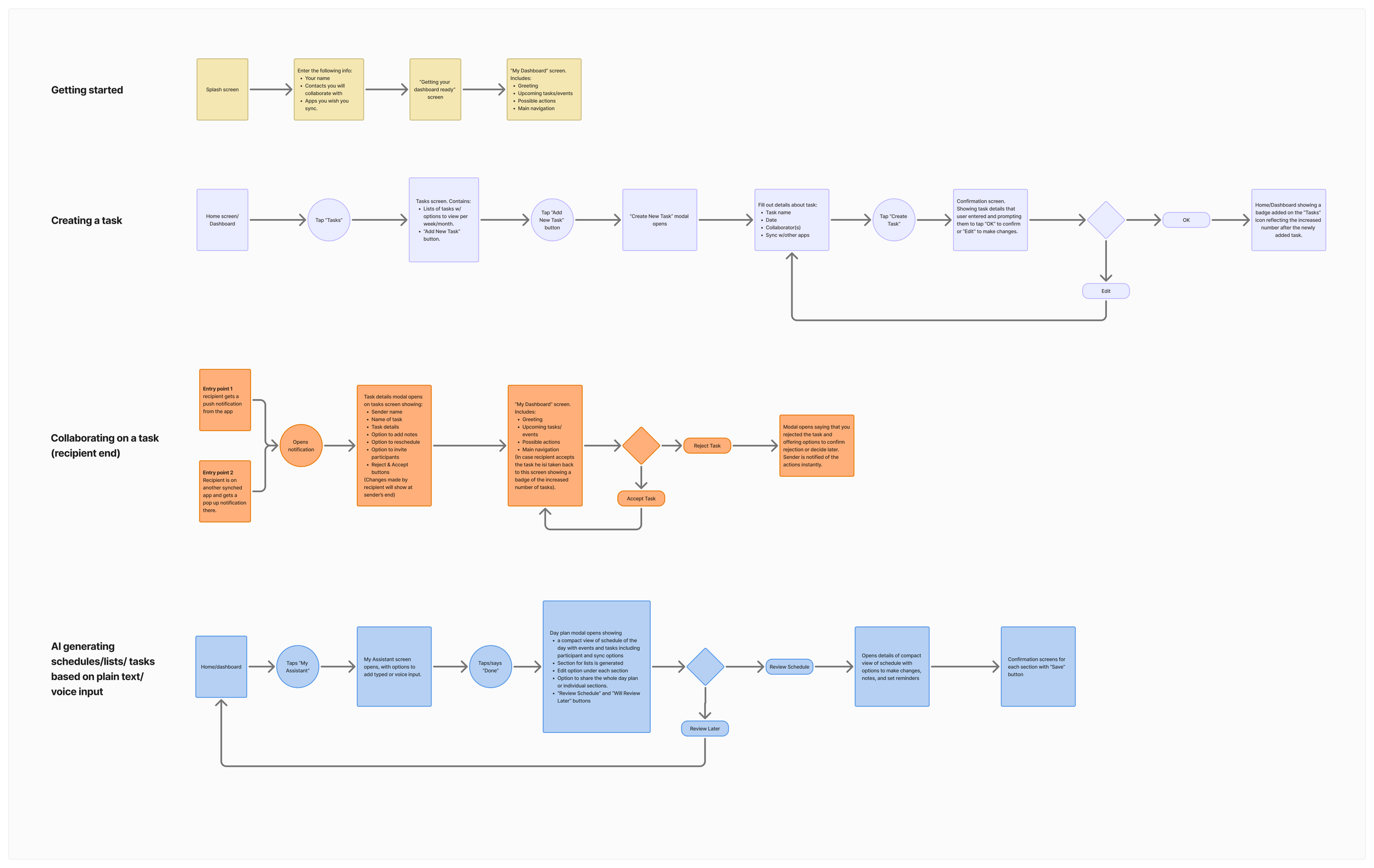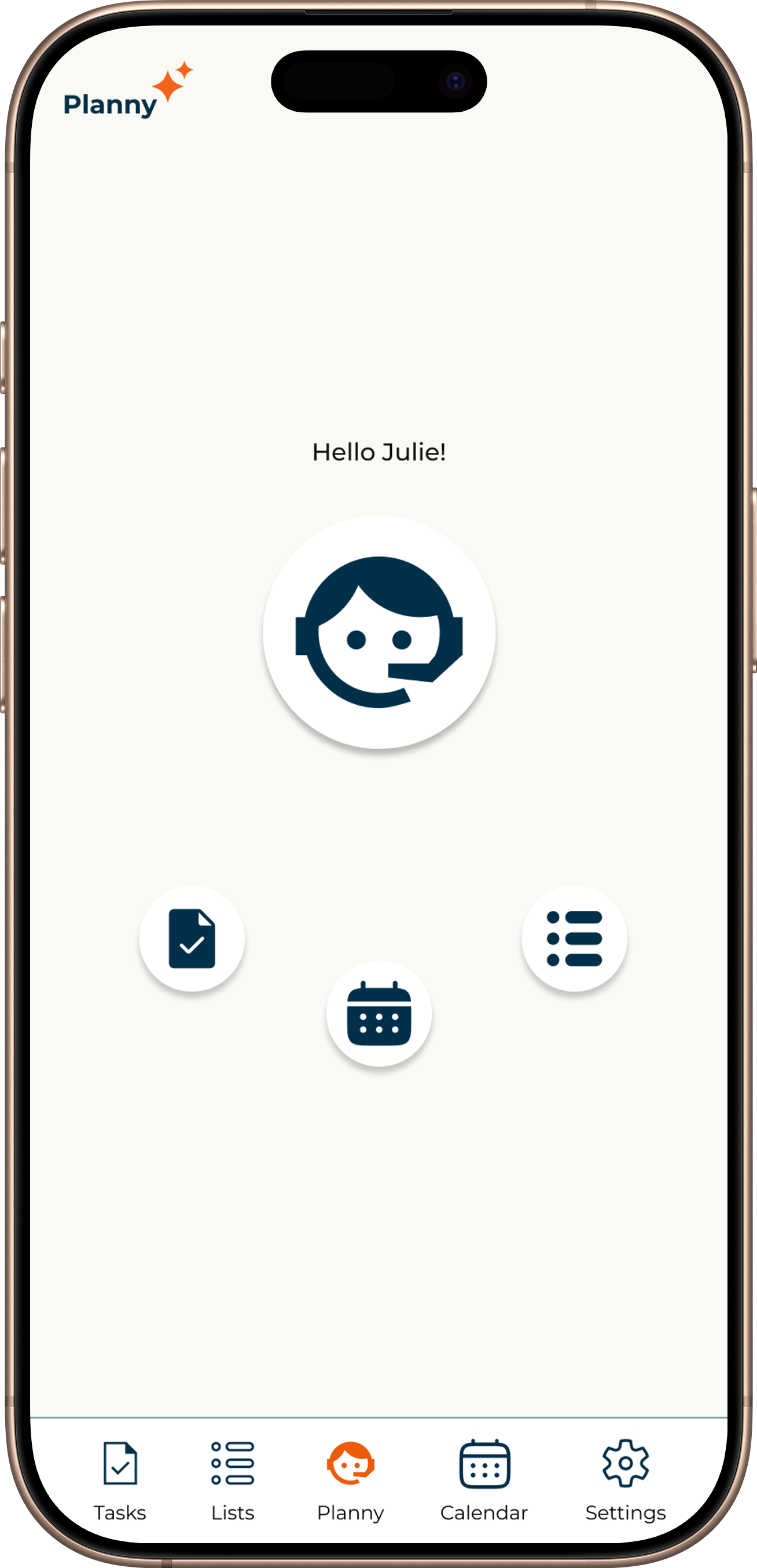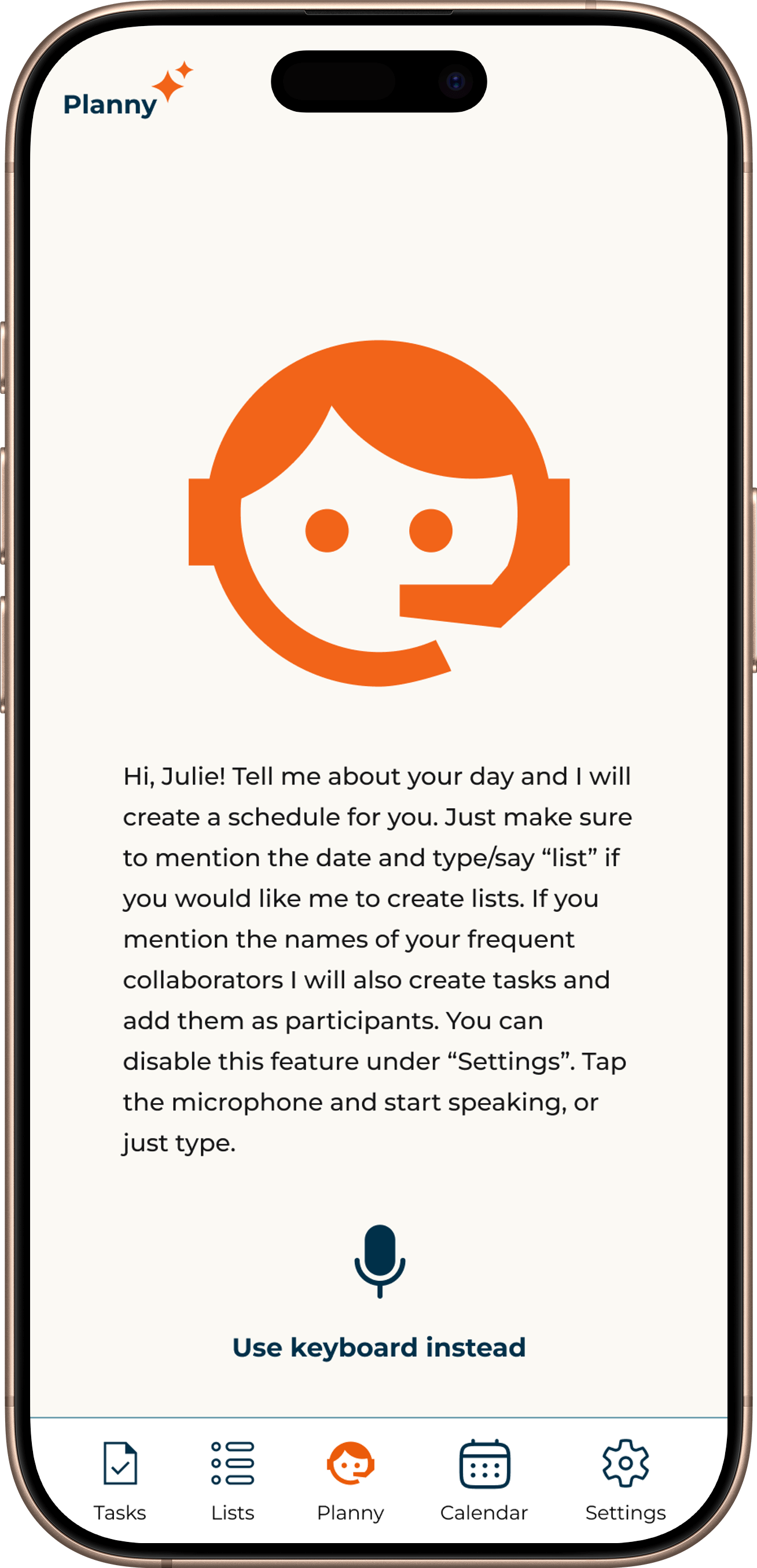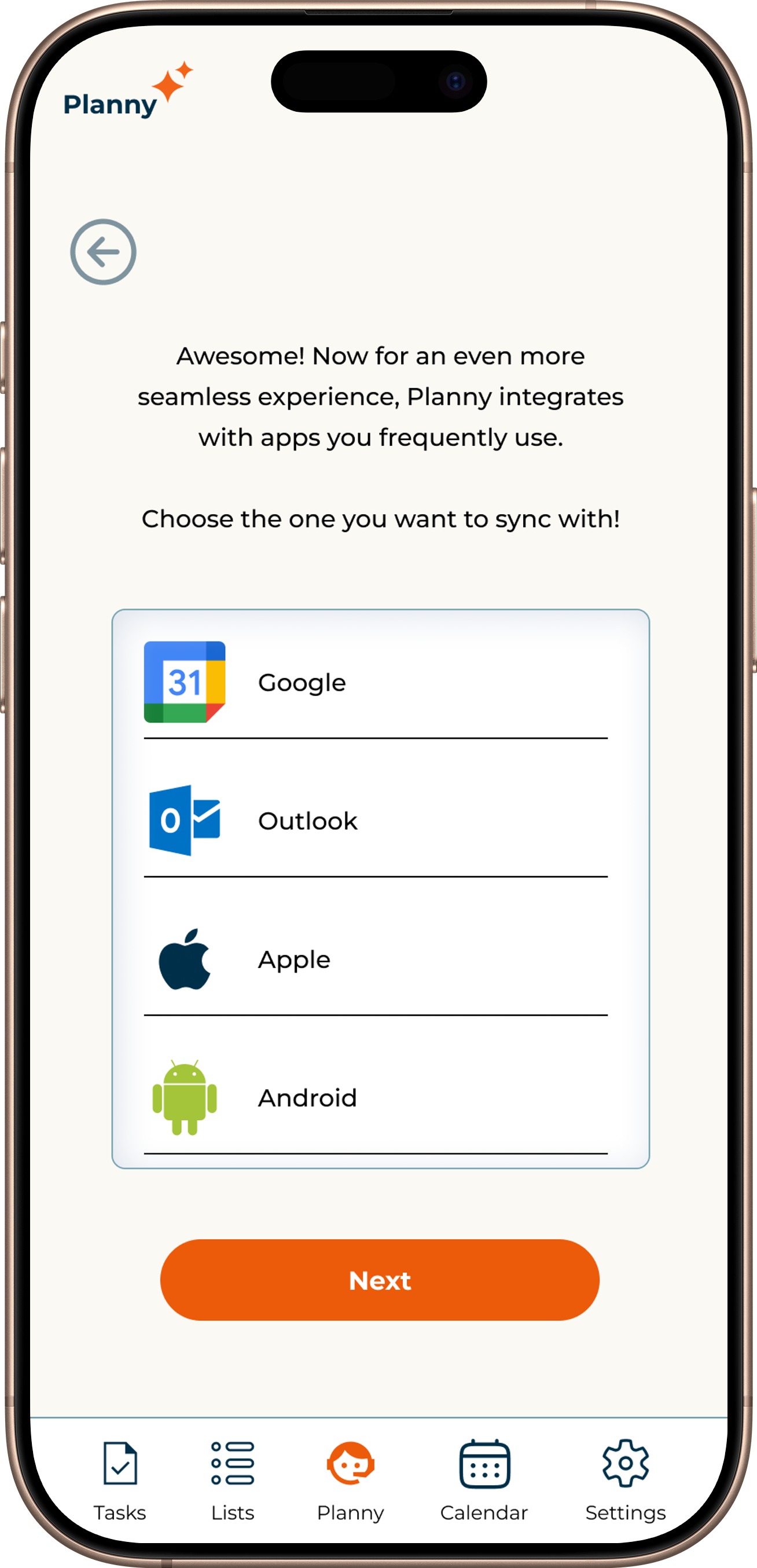Planny
An AI-powered organizer app streamlining busy working moms’ lives
Role: UX Researcher/Designer
Tools: Figma/FigJam
Duration: 7 weeks - 2023
About the Project
Overview
Planny is an AI-powered app that targets busy working moms and aims to help them organize their days. Moms type or talk to the app about their day, and the AI turns her text/speech into tasks, lists, and schedules while offering them the opportunity to save, edit, and collaborate with family members.
Background
Planny is a tech startup working to launch an organizer app. The company has identified busy working moms as a main customer profile and aims to create a groundbreaking product that fills the gaps in their current experience.
Goals
Understand busy working moms’ routines, behaviors, needs, and goals.
Identify the pain points in their current schedule management experience.
Propose a design solution that responds to those pain points and enables them to achieve their goals.
The Design Process
Empathize
Interviews were the first step to understanding busy moms’ lifestyles, priorities, needs, and goals. Busy working moms are stressed out; that’s a given, and no interview is needed to find that out. However, reaching a potential solution that would make sense to THEM cannot be done without paying attention to the details of their stories and observing them speak.
Define
And this is what helped me build a realistic persona, Julie, and an empathy map that truly represents her and the other moms. This is a pivotal point in the process because if I define the problem poorly, I am trying to solve the wrong one. Julie and the empathy map are my references from that point on.
Ideate
The ideation phase involved examining Julie, her routines, pain points, goals, and moments from the interviews that stood out to me. For this project, I felt that creating “a day in the life” would help me visualize the solution that can fit best in Julie’s life. Also, formulating a “How Might We?” question helped me focus on the design goal.
Empathize
The Moms
Participants
-Tracy
“As a working mom of three, my life revolves around calendars, and I always need to share tasks and events with my husband, so I put everything in a Google Doc, but, of course, I have to remind him constantly to check it!”
-Zoe
“I take my baby to the doctor every week. My sister often helps and takes her if I’m busy with my other daughter. I need to keep my sister always updated on my baby’s condition before the doctor’s visit. Sometimes I call her and ask her to write down stuff, text her, or share a note with her from my phone. It’s a hassle!
The Findings
These were the recurring themes in the interviews.
Routines
Participants rely on multiple tools to manage their time. The top ones are calendars, phone reminders, and notes.
Participants tend to share tasks/reminders/schedules with a family member(s).
Pain points
The hassle of checking and monitoring different tools that are usually not synced.
Keeping family members informed and up-to-date on upcoming tasks/chores.
Goals
Be in control.
Feel supported.
Feel less stressed.
Stay organized.
-
Please tell me a bit about yourself.
How would you describe your schedule?
What’s a typical day for you?
How do you typically manage your schedule and tasks?
What would you say is your biggest challenge when managing tasks? Why?
What’s an easy day like?
How do you feel about the way you manage your schedule?
Do you use any tools for doing that? What are they? (It’s a good idea to ask people to show you the tools they use if they are manual or you can ask them to share the screen if they use a digital product and are OK with sharing).
When did you first start using XYZ (their current tool)? Have you always used it the same way?
How often do you use this tool XYZ? Tell me how you typically use XYZ.
How do you feel about your experience with XYZ? Is there anything you want to change about it? Why?
What would you say is the best part of the XYZ experience?
Describe your ideal schedule/to-do list management tool (It can be something they wish existed).
How do you feel about this tool you just described?
Is there anything else you’d like to share regarding your schedule management habits?
-
This was the most time-consuming part. I typically do not take notes during the interviews. I record and transcribe them to give my full attention to the person I'm speaking to and ask follow-up questions if something interesting came up. I do write a summary right after the interview when the most important details are still fresh on my mind. Then comes the process of going through the transcripts and tagging them with labels like "goals", "pain points", "routines", etc. then cluster related ones into categories (and subcategories), and then give each one a name that represents that category/subcategory, aka, affinity mapping! I usually use UserBit as it expedite the process for me. While extracting goals from the data, my priority was higher level goals that resonate with the mom and speak to their emotions.
Define
Meet Julie
A Day in the Life of Julie
Empathy Map
The Design Question
How might we offer busy working moms a streamlined time management experience where they feel relaxed and in control?
Ideate
An Aha Moment
In one of the interviews, a mom was Facetiming me while feeding and changing her newborn. She looked frazzled but insisted on interviewing while tending to her baby. So, for most of the interview, I was looking at her ceiling since she put her phone down to take care of the baby. This is when it struck me: “THIS MOM LITERALLY HAS HER HANDS FULL. HOW CAN I HELP HER?”
What should the solution be?
A good starting point is to consider how it could help the target user achieve their goal. This way, I break it down into tenets that respond to the needs of my users. So, in Julie’s case, she needs to carry out multiple tasks (make lists, create schedules and reminders, etc.). Julie is super busy and stressed, so whatever I propose to help her should be easy to use. It should be something she can share with her husband since they work together as a team. And it should sync and integrate with other tools she currently uses, e.g., her Outlook and Google calendars. Now, I have some design tenets to guide the design decisions.
All-in-one
User-friendly
Collaborative
Integratable
The Solution
I wanted to create something that steps in and “does all the time management work for them.” So, I thought of a multi-functional time management tool that allows moms to make lists, schedules, notes, and reminders, share tasks with family members, and collaborate on them in real time–an all-in-one solution that offers convenience and eases the stress of having to check multiple tools. The highlight of the experience is the “My Assistant” tool, which moms can speak to about what they need to do on a given day and it can turn her speech (or text) into schedules, tasks, and lists, helping those moms whose hands are full.
Sketching the Experience
The User Flows
I started by identifying some key tasks that users need to achieve and created flows to illustrate the necessary steps. These are:
Onboarding
Creating a task
Collaborating on a task from the recipient end (to illustrate the full experience)
Creating schedules/tasks/lists using Planny’s AI.
The Wireframes
Note: The app’s initial name was ReminderX. I changed it later to Planny as I wanted something that sounded friendly and appealing to stressed-out, busy moms.
Digitizing and Annotating
I then digitized the final iteration of the hand-sketched wireframes and added annotations to explain the interactions. I was ready by then to work on a high- fidelity prototype.
The Design Solution
With Planny, you can create tasks, lists, schedules, and reminders, all in one place.
All-in-one
Planny is easy to use and the AI feature takes the planning work off users’ hands. You simply speak/type about your day and it creates calendar events, tasks, and lists for you.
User-friendly
During onboarding, Planny allows users to add people from their contacts list, streamlining the collaboration experience.
Collaborative
Onboarding also allows users to integrate Planny with other time management apps for a convenient experience, addressing users’ pain points of having to monitor multiple tools.
Integratable
The Prototype
I would love your feedback on the prototype.






